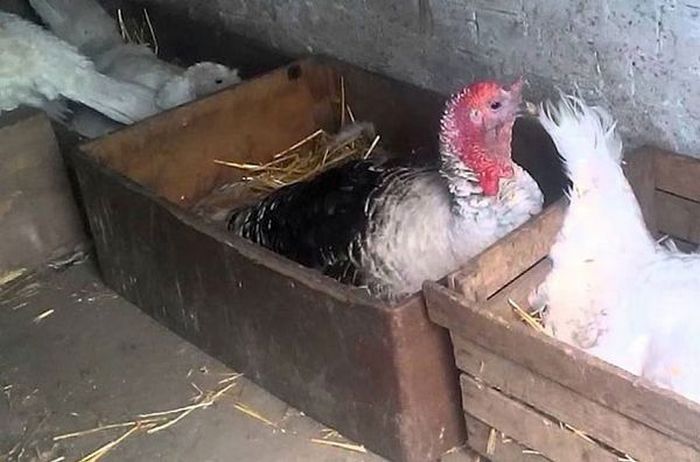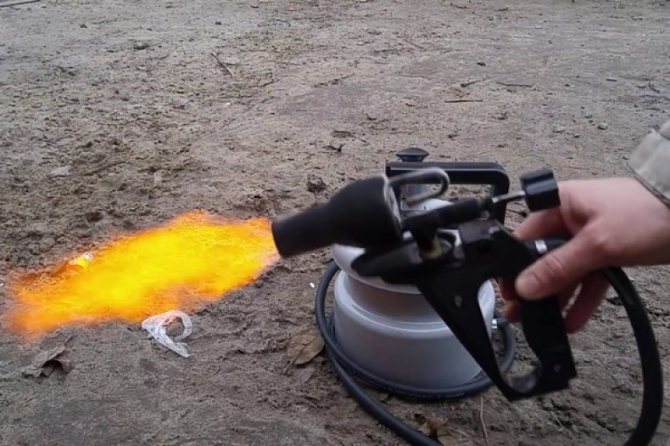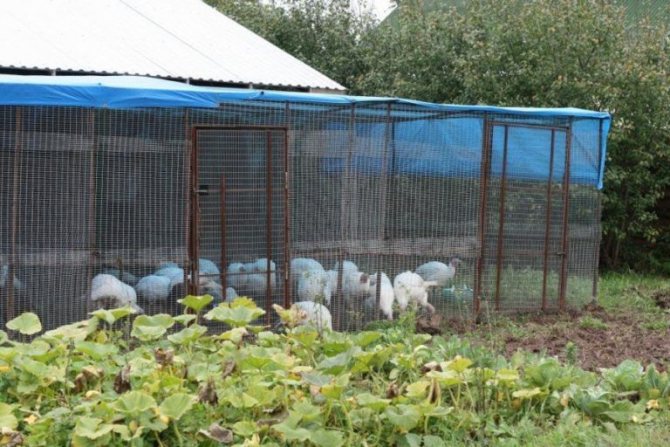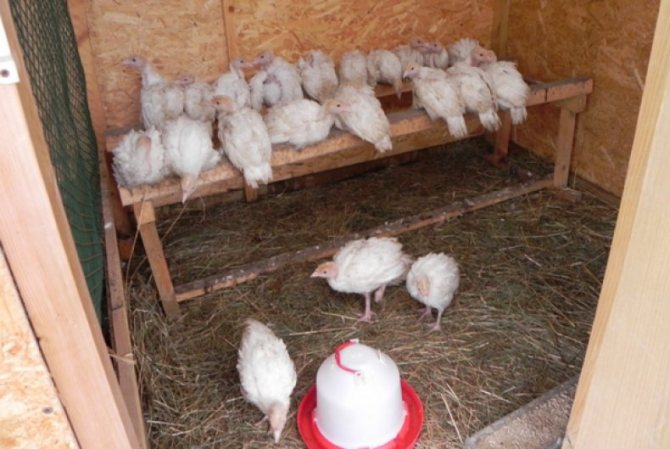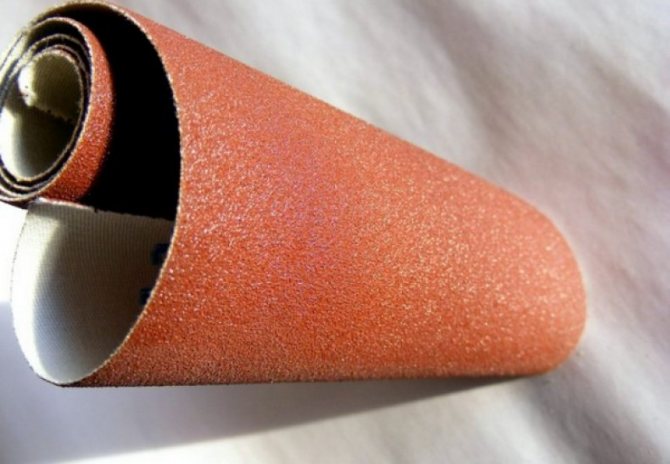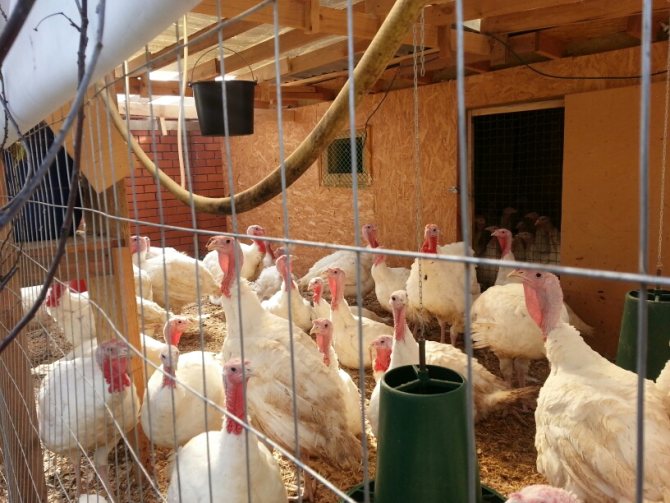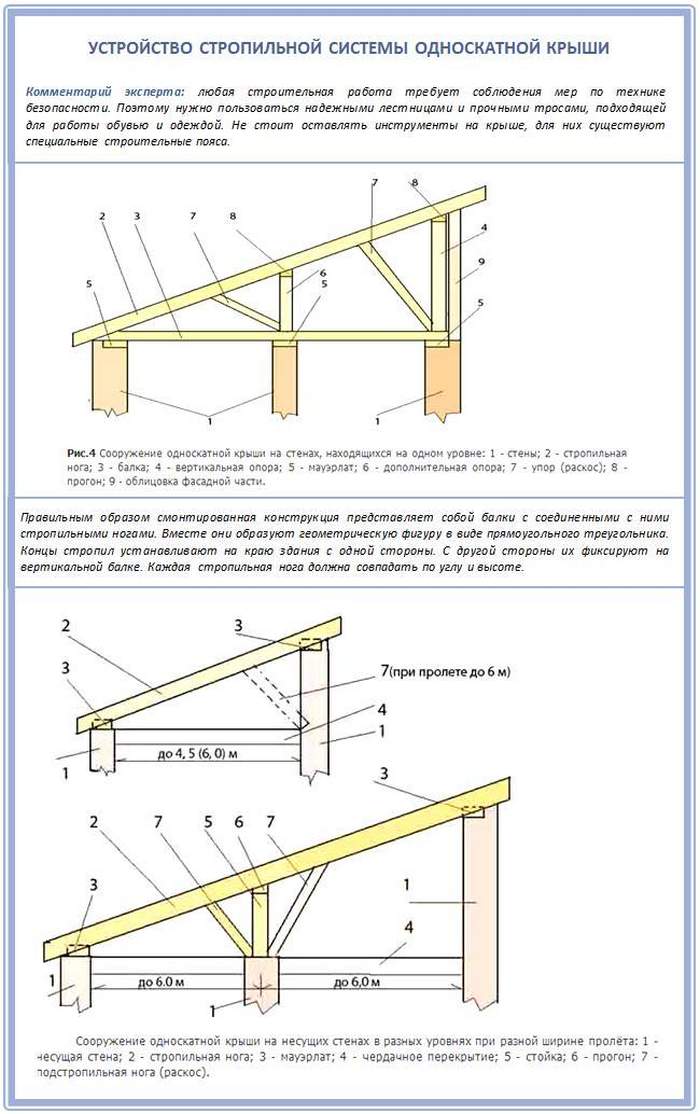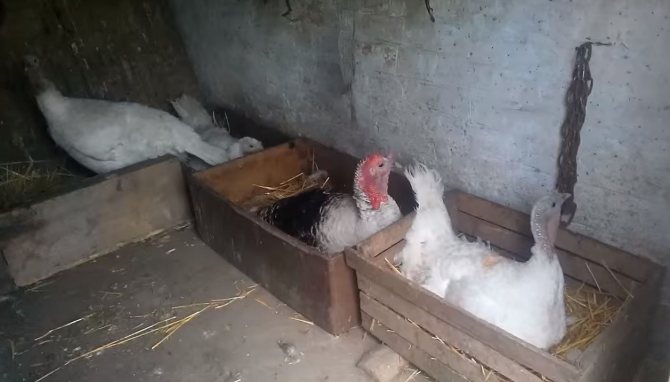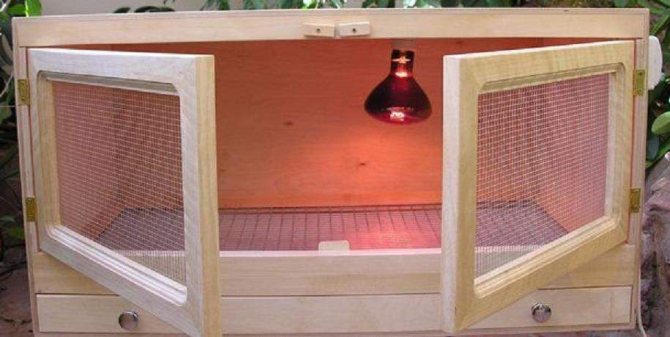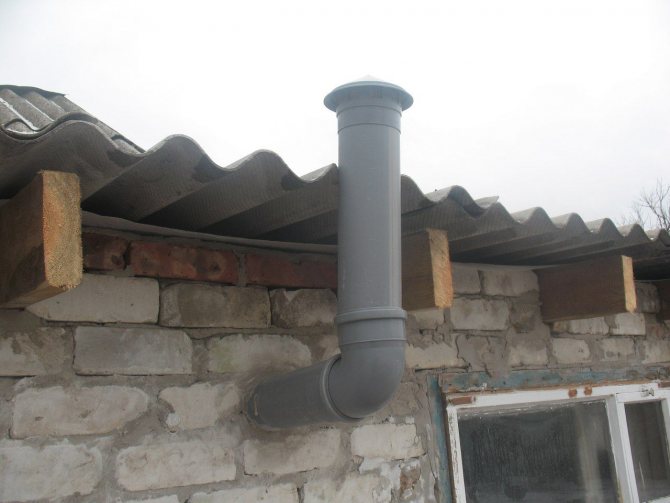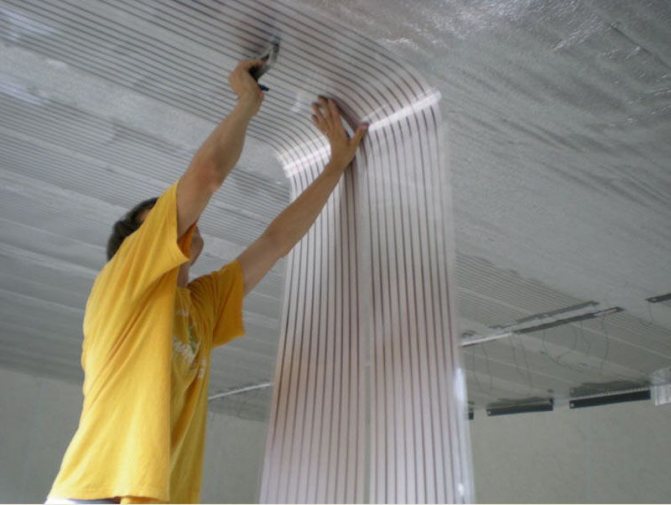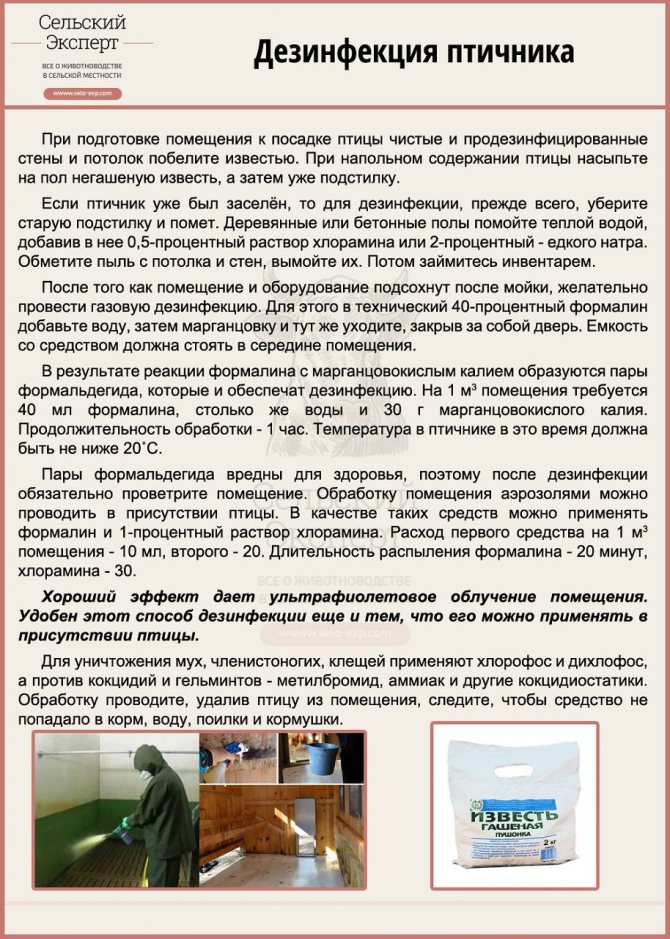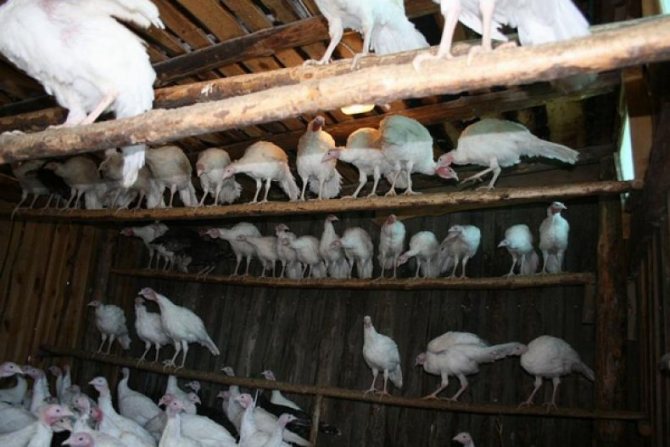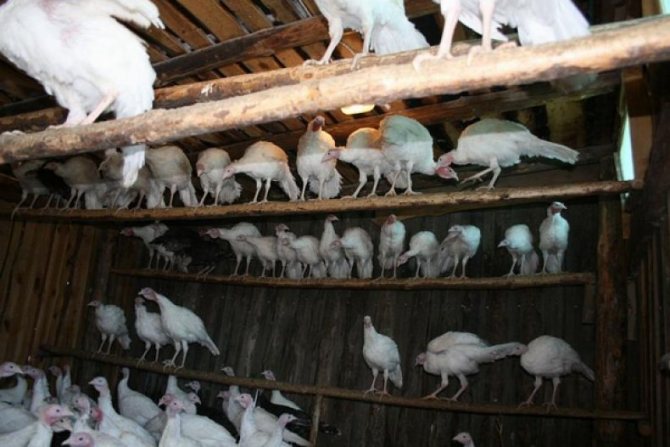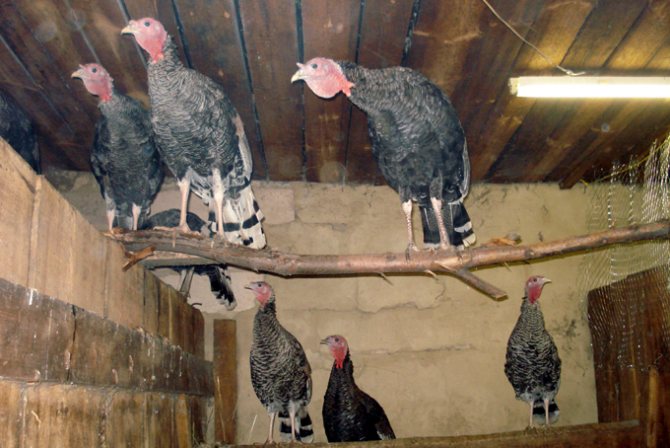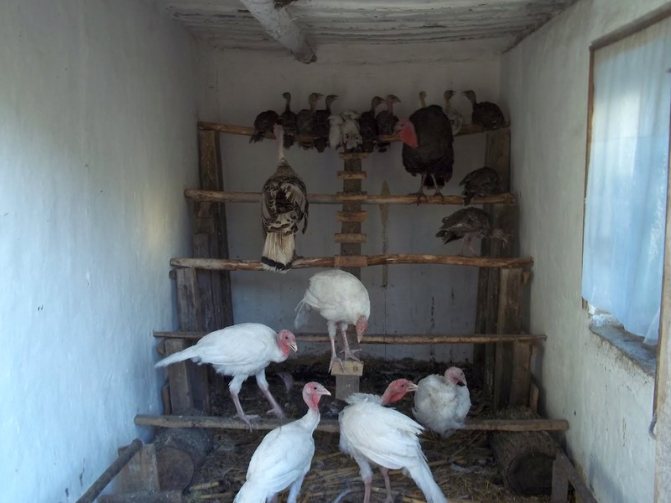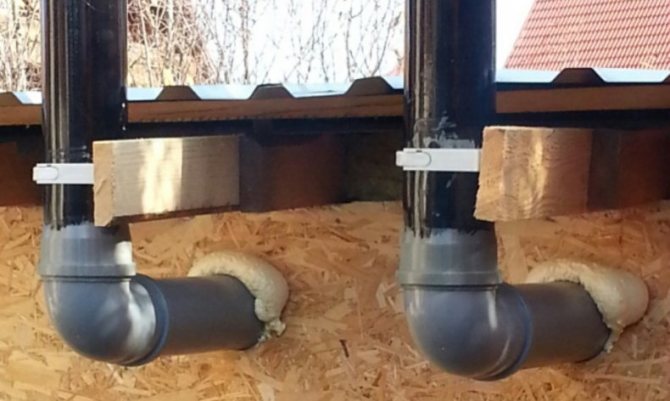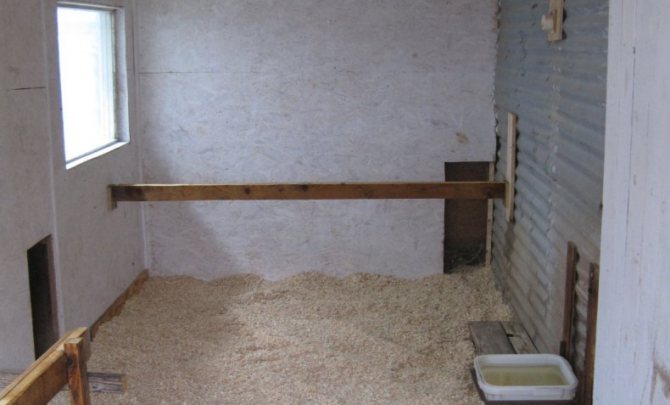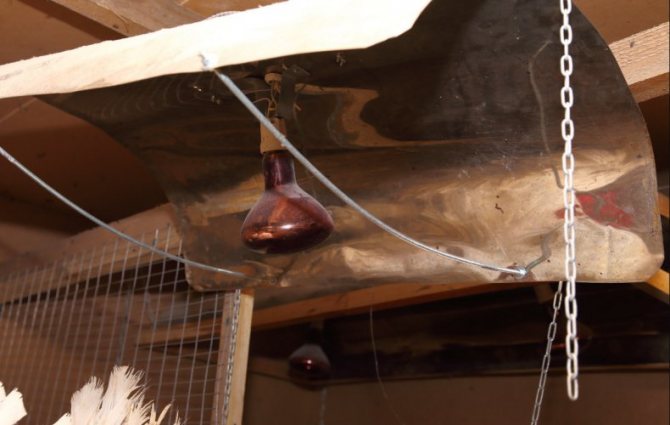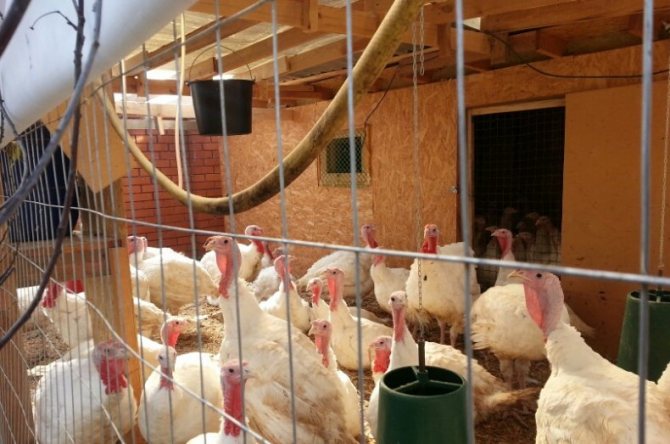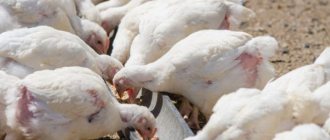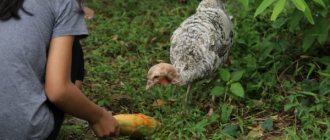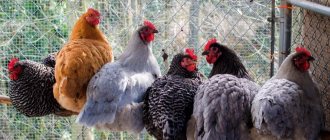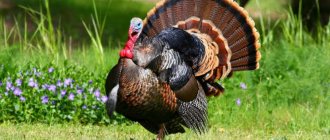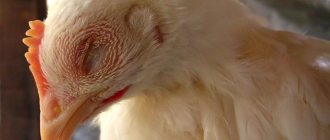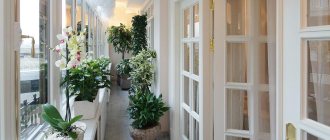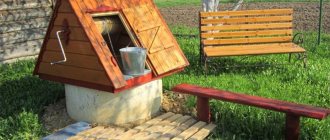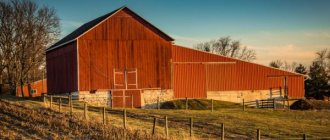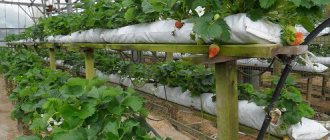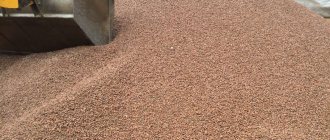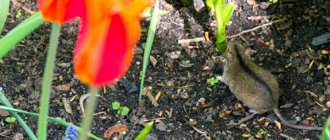What is important to consider when building a turkey house and how to do it
When building a house from scratch, it is important to choose the right place where the house will be located. Recommendations for such a place are as follows:
- the presence of a small elevation (dry area away from the occurrence of groundwater);
- a sufficient amount of sunlight (construction in constant shade should be abandoned);
- the place should be spacious so that the premises for birds and the walking area can fit;
- location away from crowded places of people and cars (highways, garages, gazebos, etc.).
Turkey room
Helpful advice: when choosing a site and the subsequent construction of a poultry house, you should take care of the availability of additional space. Some farmers start with a small number of livestock, and over time they think about expanding their business and very often face the problem of lack of free space.
Despite the fact that turkeys, especially adults, birds are unpretentious, the room for breeding turkeys and keeping them must meet certain requirements. These include:
- the size of the area per individual;
- appropriate temperature regime;
- a certain level of humidity;
- good ventilation;
- lack of drafts;
- correct lighting;
- compartment zoning;
- the presence of an open-air cage.
The largest turkey breed can be found in this article.
The walking area should be planted with grass, clover or alfalfa, as turkeys happily use pasture.
The basic requirements for the location may look like this:
- lack of groundwater;
- the presence of solar lighting;
- remoteness from residential buildings.
The best place for a turkey poultry would be a small hill, in that part of the site that is well lit by the sun. It is not recommended to choose a place in the lowland, since the presence of groundwater will affect the level of humidity. Shaded areas should be avoided as UV radiation from the sun enhances immunity and promotes good bird growth.
Turkeys, especially at a young age, are rather shy and do not like noise, so the house should be located away from residential buildings, highways and agricultural equipment.
Projects and drawings
When the place is chosen, you can start drawing up the project. A typical turkey poultry is taken as a basis. In accordance with the conditions of detention, a turkey breeding house should consist of the following areas:
- main room;
- vestibule hallway;
- walking area.
In farms where turkey farming is on stream, a cage for turkey poults is provided, where they are kept separately from adults. The dimensions of the main room can be smaller, since up to 5 turkeys can be located on 1 m 2. Thus, in a room of 6 m 2, up to 30 turkey poults can live. If the house is intended for laying hens, nests should be made for the turkeys where they will lay and incubate their eggs.
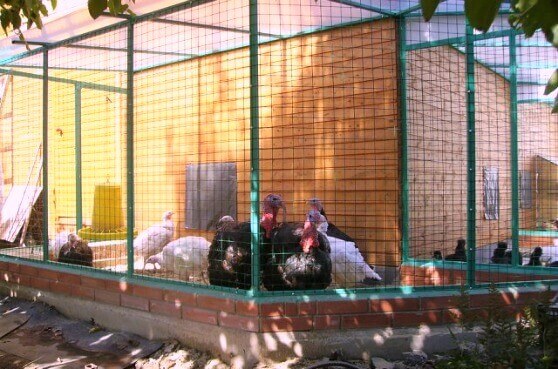
You can read about the incubation of turkey eggs here.
Tips for choosing a location
If a farmer decides to build a turkey poultry, then he should not only pay attention to the design of the building, but also the selection of a place.The house should be located on an elevated hill, this will provide the necessary protection from moisture.
The location of the future barn should be well lit, and the area should be of the required size to accommodate not only the existing flock, but also future new individuals. Place the barn away from sources of ignition and unnecessary noise. Birds love peace, so a remote location is a great option.
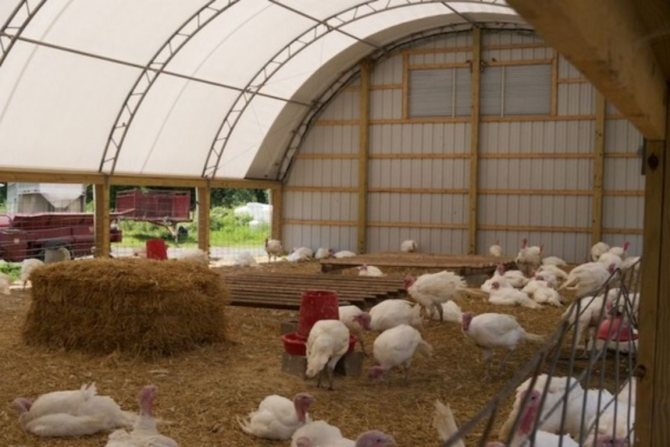

General requirements for turkey poultry
Before starting the construction of a poultry house, it is necessary to make a project and a drawing of the structure. The drawing takes into account the dimensions of the main room and the vestibule. The tambour is made small, 2 * 4 m. It is intended so that the cold air does not get to the birds. In the vestibule, a wardrobe is provided for inventory, which is necessary for cleaning the room. If the vestibule is warm and low humidity, then feed for livestock is stored in it. The doorway is made 120 * 60 cm.
There are turkeys in the main room. The calculations take into account the stocking density of the birds. If the turkeys are kept in cages, then there are 3-4 birds per 1 m2. The cage content is used for turkey poults that are raised for meat. With floor maintenance, the density is different. There are 3 birds per 2 m2.
It is insulated with straw or basalt wool or glass wool mats. In a turkey house, a ventilation system is required. Heating is usually not installed in the room. They are limited to finishing the walls with heat-insulating material.
It is recommended to raise the floor by 30 cm. It is made of concrete or wood. If the cover is made of concrete, then the bedding is made deep to keep the turkeys warm. Wood has low thermal conductivity. Livestock will be warm on a wooden floor and on a thin mat.
The main room is divided into aviaries. The herd is divided into layers, turkeys, and young animals that are more than 30 days old. Chicks are kept in a brooder for up to 30 days. Ideally, each enclosure should have access to an outdoor enclosure for the birds to exercise.
The foundation for the house is made tape or columnar. The columnar version is recommended for construction in cold and humid regions. The room will be at a height. Precipitation or melt water will not get inside. The height of the pillars also depends on the depth of the snow cover in winter.
More on the topic:
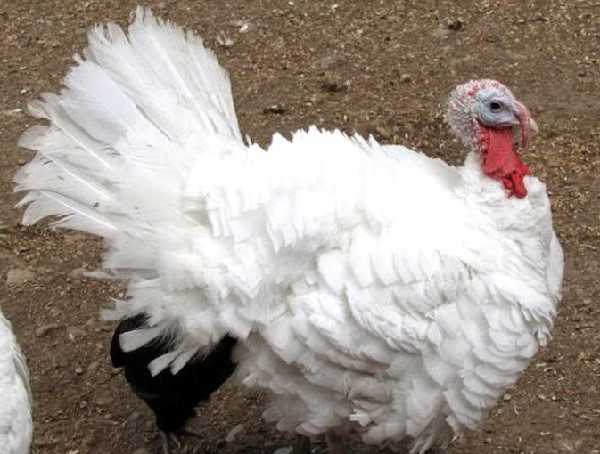

How to treat a turkey if his cheeks are swollen?
The turkey house is made light, but the windows are small. The optimal size is 50 * 50 cm. Direct sunlight should not fall on the birds. It is recommended to install shutters on the windows. They can be made with your own hands from improvised material. Shutters will help to properly regulate the length of daylight hours for birds. Small windows and shutters keep the room warm.
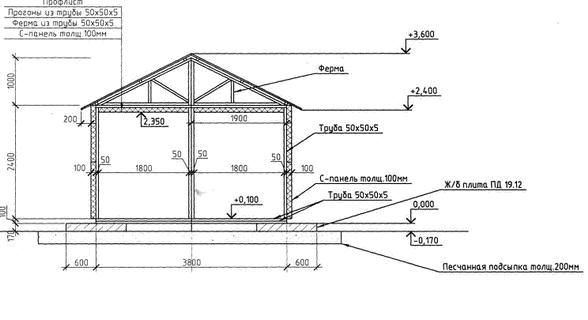

Turkey poultry house construction scheme
Regardless of what kind of poultry house you are preparing, ready-made or from scratch, there are mandatory requirements for it. In order for turkeys to grow and develop well, the room should be:
- Dry and cool. Normal humidity for poultry is 65–70%. The optimum temperature depends on the season: in winter - not less than -5 degrees and not more than -3 degrees, in summer - from 18 to 20 degrees. Often the bird begins to get sick precisely at high humidity and high temperatures.
- Purely. Cleanliness should be maintained regularly. Particular attention should be paid to the bedding - it must be fresh and dry. In winter, the litter is renewed with a new layer, and in spring and autumn it is changed.
- Correct lighting. In addition to artificial light, natural light must also enter the house.
- Ventilation. It is necessary to think over and organize a ventilation system in order to periodically ventilate the air in the room.
- No drafts.
We suggest you familiarize yourself with: DIY seedling mix
In addition to the basic requirements, the correct maintenance of turkeys also provides for the installation of drinkers, feeders, perches, nests, an open-air cage for summer walking.
Interesting facts about turkeys
Record created:
07:27:32
Rather, the first thing that catches your eye when you look at a turkey is its peculiar skin formations on the neck and head. They have a very ramified network of blood capillaries, which is why they are so red.
Why a turkey is such a decoration is not fully known, but professor-biologist P.A.Manteuffel, for example, believes that such formations are traps for ultraviolet rays. Thanks to them, they enter the bird's body.
The beak of turkeys is short and very hard. This helps them to pick up the grain. In one minute, the bird can perform up to 60 pecking movements, eating about 8g of grain or 25g of mash. According to research, the stomach of a turkey can digest both glass and iron, so a turkey does not care about strong grain or corn.
An insert with additional material on the topic
It is enough to feed adult turkeys 3 times a day. In the morning and in the evening, you can give the birds grain, and at lunchtime - a wet mash. One turkey eats about 120g of grain, 50g - grains, 40g - bran, 300-400g - juicy and green feed, up to 35g - grass flour, 5g - meat and bone meal, 10g - chalk, 2g of salt and gravel.
It is very rare for a turkey to be attracted to just one turkey. Despite its calmness and clumsiness, the turkey is an ardent bird. Before mating, he raises his feathers on end, unfolds his tail, spreads his wings, scratches the ground with them, pacing around the female.
When mating usually count on the ratio of males and females 1: 10-1: 15. Spermatozoa of a turkey have a high viability and remain in the oviduct of the female for about 2-3 weeks.
It has been noticed: the brighter the color of the male, the more pugnacious he is. Therefore, some researchers believe that coloration serves as a wedding dress and as a deterrent for competitors. During the battle, the turkeys take on a frightening appearance - they ruffle their feathers, their "corals" become bloodshot and turn scarlet.
It is customary for turkeys not to beat when lying down, so the one who lies down and stretches his neck considers himself saved from reprisals.
How much space do these birds need? The proverb “in cramped quarters, but not offended” is not suitable for turkeys. Two breeding birds require at least one square meter of usable area.
At night, the turkeys roost. The planks for it should be such that the birds almost completely cover them with their fingers. For adult turkeys, the perch plank can be about 5 cm wide, 10 cm high, for turkey poults 3.5 and 7 cm.The distance between the planks on the perch should be at least 55 cm, for turkey poults - 28 cm, and the height from the floor is approximately 40 cm.
Somehow a message appeared in the American press that turkey meat and its eggs are an effective and harmless remedy for insomnia. Therefore, some people advise eating these foods for dinner.
Another interesting fact: turkeys can sense the change in the weather. So, foreshadowing changes for the worse, they pluck themselves, straighten their feathers.
Nutria delicious meat
Many of us do not know that nutria meat is not only very tasty, but also very healthy. Dishes are very popular.
Giant rabbit cage sizes
Rabbits are giants. length 80cm or more and weighing 7 kg or more. They usually have proportional, strong, muscular and straight legs. Back.
How long does a pig pregnancy last?
The most profitable is the purchase of good sows in order to obtain offspring for their own needs and to raise young animals for meat, followed by it.
Buy cages for dwarf rabbits
What to buy for the rabbit. Rabbit cages and stuff. List of what you need for maintenance and care.
Brovaseptol for rabbits
Rabbits are very shy animals and are highly stressed. Therefore, if you have no experience in treating them, it is better to consult a veterinarian.
Small breeds of cows
The Guernsey breed of cows has a dairy type of productivity. Cattle of this breed were bred in the late seventeenth and early eighteenth centuries on the island.
Nutria business in Ukraine
Nutria meat is a dietary food product. It is similar in color to beef, in aroma and taste it resembles chicken, and in.
Rabbit Cage Net
Many people find it beneficial to breed rabbits on their property. In this regard, questions often arise & how to make a cage.
Russian ermine rabbit
The Russian ermine rabbit is one of the oldest breeds of small rabbits of pure white with a strong sheen in color and black or dark brown ears,.
Read also: Turkey weight by month - maximum at 1, 2, 3, 6 months
Ventilation system requirements
Turkeys do not tolerate both high temperatures and low temperatures, in addition, the bird reacts negatively to drafts, which can cause various diseases. In order to maintain an optimal temperature regime and ensure the circulation of air masses, ventilation is equipped in the poultry room.
Ventilation system
Most farmers prefer ventilation ducts that have a valve. This is the main part of the structure itself. Optimally, a box with dimensions of 25x25 cm is made, and it is placed under the ceiling. When installing the ventilation system, special attention is paid to reliable fastening of the entire structure, since when metal objects fall, they can seriously injure the bird or even kill it.
Ventilation
How to build a turkey house yourself without such an important detail as ventilation. The feces of turkeys have a very high content of ammonia and its accumulation in the room will not result in anything good. To do this, a ventilation duct is made under the ceiling with a pipe leading to the outside. The sash must be made so that it can be opened in normal weather and closed in severe frosts. All parts of the box are placed on the ceiling so that the turkeys do not get it and fill it up.
Lack of clean air and oxygen, entails inhibition in the development of young animals and a decrease in the egg production of females. In addition, if you go into a turkey or chicken coop, you can smell the ammonia.
In the summer, it makes no sense to use ventilation at all. For ventilation, it is enough to open windows and doors.
How to build a foundation?
For the poultry house, they clear the area from debris and foreign objects. On the ground, markings are made using a tape measure and a level. Set the pegs. To make it easier to dig out the foundation, marking is necessary: a string is tied to the pegs. All dimensions are checked with regard to right angles. The turkey poultry does not belong to large and heavy buildings, therefore, the foundation is made unburied or shallow:
- according to the marking, they dig a trench 60-100 cm deep, 40-70 cm wide;
- the bottom of the trench is leveled, a drainage cushion is laid: 10 cm of gravel, 8-10 cm of sand;
- formwork is installed along the perimeter of the trench. Formwork height 20 cm above the soil surface;
- roofing material is laid for waterproofing;
- fittings are installed inside the trench;
- the trench is poured with concrete;
- further work is carried out in 27 days. The concrete base dries naturally.
The foundation must be ventilated. For this purpose, holes are left in it. They are made from plastic pipes. The pipes are laid in the formwork in several places. Atmospheric air passes through them to the structure. If you ignore the ventilation of the foundation, then it will not last long. After 27 days, the formwork is removed.
For a columnar or pile foundation, pits are dug along the perimeter of the marking: a step of 1.5-2 m. The height of the pillars above the soil is 30-40 cm. A drainage pad is placed in the pits, pillars or pipes are installed. Pipes and niches around them are filled with concrete. Wait until the concrete dries. Further, roofing material is laid on the structure and construction continues. Columnar foundations are suitable for frame and timber structures.
It is believed that the most optimal construction option is frame. Such a shed for turkeys can be quickly built with your own hands on a personal plot.
The frame is made of wooden beams, the outer and inner sides are sheathed with boards or OSB sheets. Between the sheathing, an insulation with a thickness of at least 10 cm is laid - it can be mineral wool, foam, sawdust or other material. The entire structure is located on a reinforced concrete foundation. Between the lower beam and the foundation, waterproofing should be laid, for example, from 2-3 layers of roofing material.
Area
The area of the turkey house is determined according to the number of livestock. So, for 4-5 turkeys or 1-2 adults, 1 square meter of area is required.
Power supply
If the bird is kept indoors all year round, electricity is supplied to it. For lighting, lamps are used at the rate of 3 W per 1 square meter for turkeys and 5 W per 1 square meter. m. for an adult bird. Lamps are suspended at a height of 1.5-1.7 m from the floor. Electrical cables should be kept out of reach of turkeys. It is best to place the cables in corrugated hoses for better protection against damage and moisture ingress.
The paddock, if possible, is located on the south side. The area is fenced off along the perimeter and on top with a net, the recommended height is 2 meters. Above the net should be mandatory to avoid the attack of a bird of prey. Access to walking from the poultry house is provided by manholes, which must be equipped with doors. The size of these manholes should be approximately 50x50 cm or more, depending on the size of the bird.
Windows, floors, ceilings
House windows should have two frames and should be 20 cm from the ceiling. The number of windows is chosen so that all corners in the room are illuminated.
Floors in turkey pens should be firm and level. Straw or sawdust is used as bedding. The recommended thickness of the litter for turkey poults is 7-10 cm, for an adult bird it is 25-30 cm.
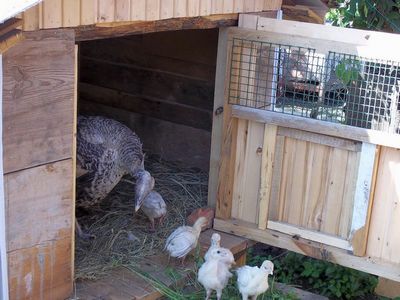

Important! Litter is essential, especially in winter, because the main cold comes from below and a layer of straw or sawdust will prevent this.
Ventilation
Must be mandatory. It is necessary to equip a system that would supply 4-6 cubic meters. m. of fresh air per hour per 1 kg of live weight and change the air about 6 times per hour. The hood is installed in the lower part of the room. Drafts are not allowed in the house.
To arrange ventilation, you can use a ventilation box equipped with a valve. It is installed on the ceiling, the recommended dimensions are 25 x 25 cm.
Organization of walking
To organize the daily walking of turkeys and turkeys, an aviary is attached to the wall of the house, which is oriented to the south. The side walls, the minimum height of which is two meters, are made of metal mesh, and it is advisable to build a canopy on top.
It is considered optimal if there is a square meter of the walking area for one adult turkey. If the area of the courtyard allows, then the aviary is made of two halves, which are operated alternately. In this case, the issue of cleaning the used area is easily resolved.
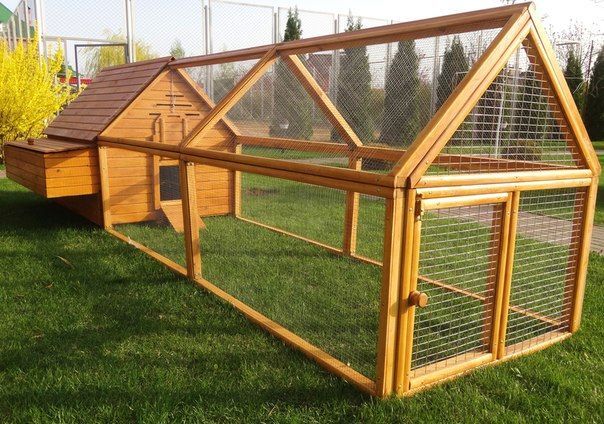

Aviary with walking enclosure
For the unhindered exit of turkeys, a hole is equipped in the wall. It should be raised eight centimeters above the floor. The size is selected depending on the size of the grown turkeys, so that even the largest specimen can freely enter the aviary. From the inside, the access door is closed at night, for which a door is provided.This will prevent predators from entering the turkey house.
Turkeys need to walk all year round. In winter, the area in the aviary is cleaned of snow drifts and covered with straw. This helps to protect the turkeys from dangerous frostbite of the paws. If, nevertheless, such specimens appeared in the flock, then they should be used for meat in order to prevent subsequent death.
In order for the turkeys to willingly go for a walk, feeders are firmly fixed in the aviary, which are filled with grain in the winter season, and with root crops in the warm season. To attract turkeys, brooms made from twigs of deciduous trees, as well as bunches of dry grass, are hung on the hedges.
Lighting features
This parameter plays an important role in the life of birds. For turkeys, the lighting time (daylight hours) should be at least 13 hours. In the summer months, there is no need for additional devices that give light, but with the onset of autumn and winter, the need for lamps already appears. To do this, you will have to equip the house with electrical wiring and lamps.
Lighting in the poultry house
To illuminate the room, you need simple incandescent lamps with a power of 60 W (they can be replaced with LEDs that have similar indicators). The minimum illumination is 6 W per square meter. When autumn comes, the light is turned on at the same hours:
- from 6 in the morning until the moment when dawn is full;
- with the onset of dusk until 20 o'clock.
We offer you to familiarize yourself with: Do-it-yourself greenhouse from a bar detailed diagram
In the daytime, the light is turned on if it is very cloudy outside; the rest of the time, natural light is used.
Creating an aviary for walking turkeys
In terms of the standard for the area of the aviary for 1 bird, you can adhere to the minimum figure of 2 adult birds per square meter. Natural soil can be chosen as the basis of the site if it is dry enough. But the most suitable option is to create a wooden flooring like the floor in the turkey house itself.
The sequence of work is as follows:
- The dimensions of the site are outlined - first in the drawing, therefore directly on the site.
- The site is freed from grass, the top layer of soil - for this you can dig it up 40-50 cm.
- After that, the soil layer is carefully leveled and sequentially covered with sand, crushed stone, gravel (or expanded clay).
- Racks are constructed along the perimeter at certain intervals, which will serve as a load-bearing support for wooden beams.
- Wooden beams are laid and strengthened, previously treated with varnish against decay, as well as sanded (so that the birds do not get splinters).
- Next, a wooden frame is built, closely adjacent to the turkey poultry, and surrounded by a metal mesh.
- The surface is covered with a small layer of sawdust or straw.
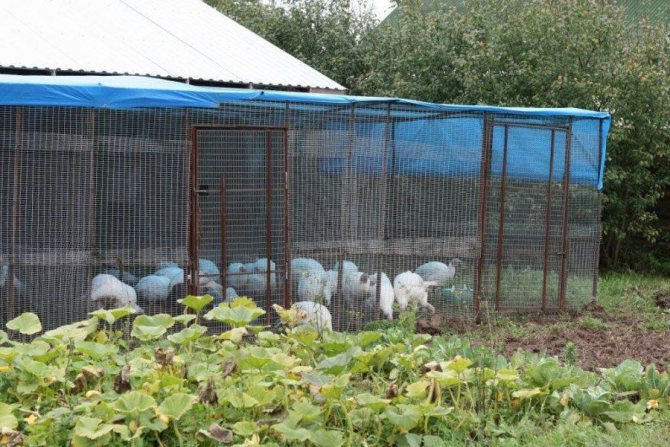

It is better to cover the roof with a foil so that the precipitation does not wet the birds and bedding
Correctly equipping a chicken coop for turkeys
A new turkey house or an existing room for keeping turkeys must be equipped with the necessary equipment.
Turkey roosts
Perches for turkeys One of the main elements is a perch. Select the warmest side of the room for installation. For perches, you can use planed bars or hewn poles. The surface is brought to a perfectly smooth state. Usually, perches are installed in a pyramid in several tiers - the first at a distance of 80 cm from the floor, the uppermost one - 80 cm from the ceiling. The distance between the beams should be about 0.5 m.A distance of 25 cm should be left between the perch closest to the wall.
Feeders and drinkers
Feeder with drinker for turkeys Feeders can be made by hand. For this, an oblong narrow box is hammered together with a strip in the middle of boards or plywood. Drinkers are easy to make from plastic sewer pipes.
In specialized stores, there is now a very large selection of drinkers and feeders, the main thing is to choose such that each individual has free access to food and water.
Nests
Laying turkey nests Laying hens and hens will need nests. They are made from wooden planks or plywood with the calculation of 1 nest for 4-5 turkeys. The optimal size of one nest is 40x70x60 cm. The nests should be located at a height of 60-70 cm from the floor. In order for the bird to have free access, a small sill is attached to the entrance to the nest at a distance of 8-10 cm.
Turkey roosts
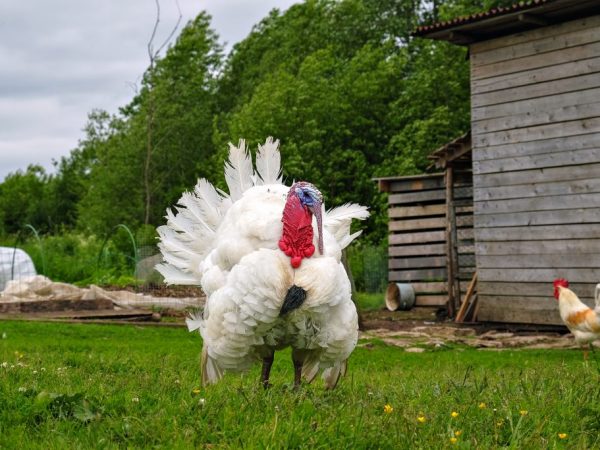

The bird roost should be smooth
This business also has its own Requirements. The roost for caged or other turkeys should be smooth and removable. Most often, special perches are placed in the heated part of the barn, so construction can begin there. A roost for a domestic individual may look like an ordinary slide, in which the last rows are located higher than the front ones. to build such an important element of a turkey poultry, prepare beams (7x7 centimeters) with slightly rounded ends.
The distance between the beams should be about half a meter, and the perches should be placed at a height of 80 cm from the floor.
If you wish, pull-out shields can be placed under the perches to help you manage droppings, and the barn and its inhabitants will be cleaner. If you have any difficulties regarding the construction of roosts, it is recommended to use drawings, photographs or videos, in them You can learn in detail about all the details and important points that relate to turkey roosts.
A few words about walls, floors and window openings
The floor can be called the main part of the room, because turkeys will walk on it most of their time. To avoid problems with limbs in birds, you need to adhere to the following parameters:
- Smooth surface;
- absence of knots, cracks, etc on the boards;
- heat.
If there should be no difficulties with the installation of a flat and smooth surface, then questions may arise with the necessary warmth. The floor covering is placed above the ground at a distance of at least 25 cm. Thanks to this height, the floors will not freeze during freezing.
It is not worth relying only on artificial lighting of the poultry house, and therefore it is necessary to make window openings. Lack of daylight leads to disease in birds. To make it clear how to arrange the windows, you can see a simple example. In any arrangement of windows, all corners in the room should be illuminated. If this rule is followed, then the chosen scheme is correct, and there will be enough light for all birds.
Windows in the turkey house
As for the walls, there are subtleties here: they must be even and keep warm. Also, special manholes will be equipped in the walls through which the bird will go out into the street. Its size depends on the size of the birds. For medium-sized breed groups, 50x50 cm is enough. Each manhole should have special doors that are closed at night so that the bird is not disturbed by drafts.
Where is the best place to place a turkey poultry
If it is possible to choose a place for the construction of a capital structure, then preference should be given to the site that:
- located on a small hill or on a dry plot of land where groundwater does not pass;
- located so that the sun's rays freely fall on it (a permanent shadow is unacceptable);
- spacious enough to accommodate both the poultry house and a place for walking turkeys;
- located as far as possible from the garage, bathhouse, barn with coal, so that the birds are not exposed to unnecessary disturbance.
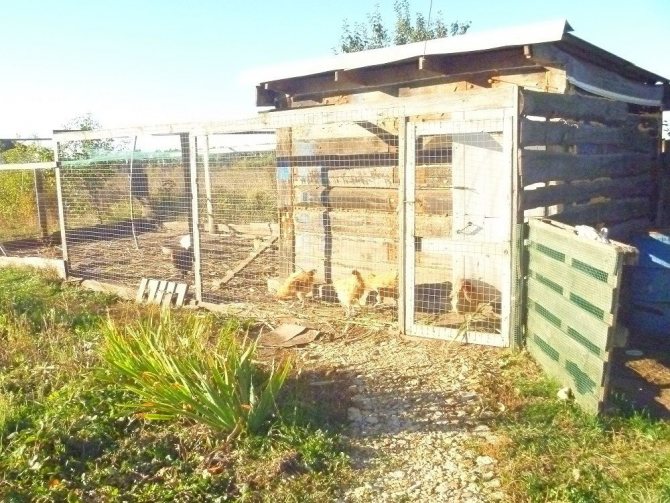

The house should be located in a quiet and spacious area.
Note! It is best to choose a site and build a room with a margin.Perhaps in the future plans will change, there will be a desire to have larger turkeys or increase their number - this will require more space.
How to make a house for turkeys with your own hands?
To keep turkeys in the cold season, you will need to build a poultry house for them. It is located in a courtyard far from the source of drinking water, on a site that is not blown by winds and is not flooded with melt water. Often the turkey house is an extension to the house. This allows you to save building materials, the room will be warmer, but you will need to equip additional moisture insulation of the wall of the house.
A barn or other building that is located in the yard is used as a house for turkeys. A turkey poultry is built from wooden planks, from bricks, or using a frame technique. How to build a house for turkeys with your own hands? How to equip it so that the birds feel comfortable in it?
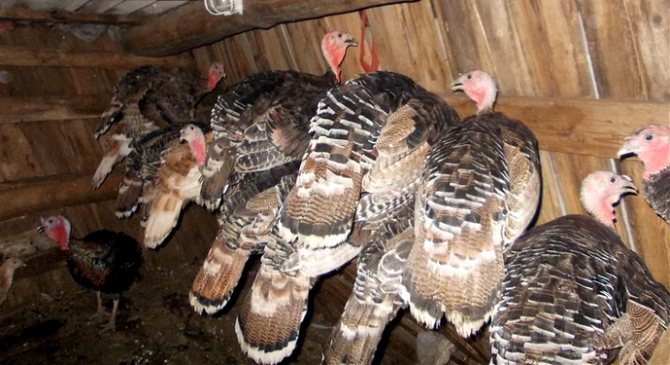

It is necessary to attach a special pen (aviary) to the turkey house for walking. Turkeys are quite active and the area of the pen depends on the livestock - the larger it is, the more area will be required. It is not difficult to build an aviary - it is assembled from several pillars and veins. Then the whole structure is covered with a mesh with cells, through which the bird cannot crawl.
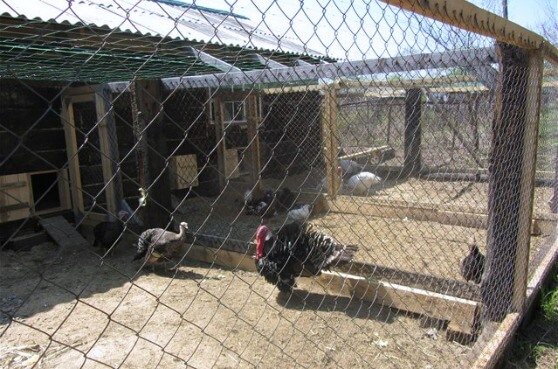

Vallière for walking turkeys
The height of the enclosure should be about 2 meters, since adult turkeys are quite good "flyers", and from above the danger in the form of birds of prey can overtake quite unexpectedly.
Construction and arrangement of turkey poultry
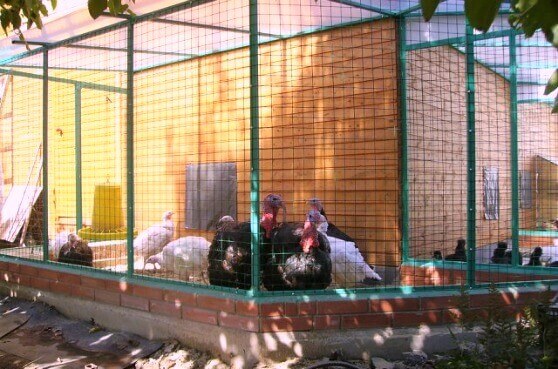

It will not be difficult to build a room for turkeys with your own hands. You can build a turkey house from scratch or use a ready-made structure, which you just need to properly equip and equip.
Many farmers do not pay enough attention to a turkey house, believing that any roof over their heads will work for them. However, turkeys are birds that are quite demanding on the conditions of detention and an illiterate organization of a turkey poultry can lead to diseases, slow weight gain, retarded development, and a decrease in egg production.
To avoid mistakes and raise a healthy bird that will give the expected result, read this article to the end, and you will learn how to build a house for turkeys and properly arrange a turkey house inside so that the birds feel cozy and comfortable.
Turkey house in the barn
The inner room should also be equipped for a comfortable stay of the bird. Here you need to install the following accessories:
- containers for feed;
- drinkers;
- perches;
- nest houses;
- ash baths;
- containers for shell rock and gravel.
It is worth considering in more detail all the listed aspects.
There are several types of feed containers:
- small troughs;
- groove structures.
When choosing one or another option, the dimensions of the birds and their growth are taken into account. Feeders are placed at the level of the turkeys dorsal region. For more rational use, it is necessary to pour the feed into the container at 1/3 of the total height.
Compound feeds, as a rule, are given from bunker-type feeders, which are designed for several feedings.
Containers for gravel and other mineral fertilizers are placed at a height of about 40 cm from the floor. Add the necessary additives as needed. It is recommended to leave such containers freely available.
It is not entirely advisable to make a separate container for wet mash. To save time and effort, it is enough to divide the trough feeder with partitions into several compartments, where these or those types of feed will be filled.
There are a huge number of drinker options, regardless of the container chosen, it is best to place it at the level of the turkey's neck. To maintain cleanliness in the room, the drinkers are covered with a net so that the birds have no problems getting to the water.The net will serve as a kind of protection from the desire of birds to get into the drinker completely.
We offer you to familiarize yourself with: Self-production of a greenhouse Breadbasket with your own hands
Drinker
With the correct placement of food and water containers, the turkey house will always be clean and dry, and therefore the owner will not have to spend a lot of time cleaning the room.
Perches are necessary for rest and sleep of turkeys: they are mounted in such a way that at least 50 cm of perch per bird falls on. The main criteria here are the strength of the sticks and their cleaning from possible burrs. The perches are set up in the warmest part of the house.
When arranging perches, preference should be given to removable structures that are easy to dismantle during general cleaning.
The lower rails are installed at a height of at least 80 cm from the floor covering, the upper planks should not reach the same height to the ceilings. Most often, a pyramidal version is made, which saves space in the poultry house. Trays are additionally installed under the perches to collect natural waste from birds. This serves as an additional measure to keep the room clean.
Nest houses create certain conveniences for both bird owners and turkeys. Females will have a place to lay their eggs, and the owner of the farm does not have to walk around the room to collect egg products.
Turkey nest
The role of nests is assigned to wooden boxes, which are suitable for birds in size. The number of houses is calculated based on the number of females. Typically 5 hens require one nest, which is best placed in a shaded area of the house. The most important design requirement is that it is safe for the turkeys.
Ash baths help birds keep their plumage clean. In the summer, you can do without it - it will be enough for turkeys to take dry baths in the yard. But with the onset of cold weather, it is worth taking care of the presence of wooden boxes with small sides, which must be filled with a sand-ash mixture. This method reliably protects turkeys from the appearance of skin and feather parasites.
More on the topic:
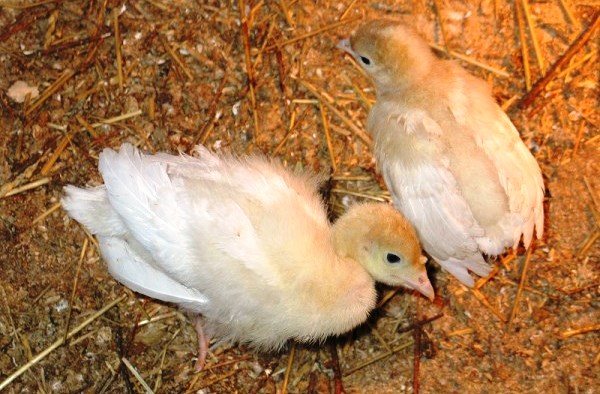

What kind of care do turkey chickens need?
- the walls are covered with roofing material.
- make a crate for thermal insulation material.
- the insulation is strengthened on the crate.
- cover it with roofing material.
- fix the entire structure with planking of boards or crate: in this case, the turkey shed can be trimmed with siding with your own hands.
- if the floor in the shed is unpaved, then a screed is made on it, covered with roofing material, the floor is covered with expanded clay, and covered with another layer of waterproofing. After that, wood flooring is made.
- electricity is supplied in the barn, lamps are installed.
- it is recommended to make a window in the barn.
- a ventilation pipe with a shutter is installed in the roof. If necessary, the shutter is opened, the room is ventilated.
It is recommended to make an extension to the turkey shed, a vestibule. It is necessary to protect the room from cold air. Turkeys are very thermophilic. Even a small temperature difference can cause hypothermia in them. Near the barn, they enclose the territory for the aviary. In it, the livestock will exercise.
Total disinfection is carried out in the old barn. It is recommended to paint the walls and floor with slaked lime. For young animals, a separate pen is provided, where the temperature is maintained at 37 C. The high temperature is achieved using a UV lamp.
The brick building is considered the most reliable. When building in warm regions, 1 brick masonry is used. In cold areas, the walls of the house are erected 1.5 bricks. Walls and roofs are protected from moisture and insulated. Whatever the building, it is important to maintain optimal conditions for keeping turkeys in it. For them, the main thing is cleanliness, warmth and fresh air.
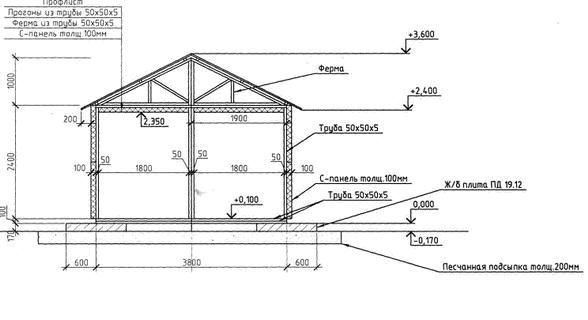

Automatic drinker and feeder for poultry: geese, chickens, turkeys.With your own hands.HeaderDrinker and automatic feeder for poultry: geese, chickens, turkeys. With our own hands. Watching time 2:24 Title From city to village / Making nests for turkeys Watching time 13:23
Perches for turkeys: drawings and building instructions
Having decided on the materials and finding the necessary tools, you can start drawing up and developing a drawing. Even if there is a desire to embody personal ideas for building a unique cell for turkeys, you need to be guided by already proven and invented schemes.
Consider the overall dimensions of the entire turkey poultry and the location of windows, doors, walls, feeders, drinkers, ash and sand trays and other details in it. The location of the walking area in relation to the entrance to the turkey poultry is also important. According to farmers, the window should be easy to open and provide a powerful stream of light for the comfort of the turkeys. The feeder is located along the walls or wall of the turkey house at the level of the bird's body for convenient feeding.
Please note that the proper level of the location of the turkey's place of residence is not located in a draft, because this will lead to diseases of the birds and the impossibility of performing an important function: egg production. The breeder should be comfortable with feeding, adding water and collecting eggs from the perches, so consider their general placement in the poultry house. The turkey should also have easy access to these items.
How can you build a roost quickly and at minimal cost? Follow these directions from experienced farmers:
What materials are needed for construction
Before starting work, you need to prepare the necessary materials:
- boards for the construction of walls;
- formwork board (20 mm thickness);
- bars for the frame;
- roof bars;
- bars for window openings;
- poles for the installation of the perch;
- floor boards;
- a sufficient amount of gravel or river sand;
- bars, sheets, plywood, wooden boxes (future nests);
- insulating materials;
- waterproofing;
- tile;
- steel rods;
- several skeins of wire;
- coarse sand;
- mixture for cement production;
- metal corners;
- screws and nails in sufficient quantities;
- ventilation pipes and grilles.
Construction works
They begin to build any room with laying the foundation. For the construction of a turkey poultry, you can use the tape type in the form of a closed circuit, the creation of which is reinforced concrete. Already on top of this strip, walls will be installed.
To create the foundation, a trench is dug, which has a width of about 50 cm; the depth is calculated based on the characteristics of the soil. Further work involves the following sequence:
- digging a trench with preliminary marking of the site. Pegs and twine can help here;
- initially, the mark of the outer contour is applied, and then the inner one;
- after completion of the work on the creation of the trench, the walls and the base are checked for evenness. To do this, use a level and a plumb line;
- the bottom part is covered with river sand or gravel (with a layer of at least 15 cm);
- waterproofing is laid on top;
- installation of formwork with reliable struts. It is installed above the ground at a height of about 30 cm;
- formwork boards are pre-cleaned, sanded and moistened with water;
- installation of reinforcement in the trench, securing with formwork and wire tying;
- concrete is used for pouring (a mixture of cement, coarse sand and gravel 1: 2: 2.5);
- you need to pour out gradually, in layers;
- tamping is used to eliminate voids;
- the last layer must be leveled.
It will take several days to dry the concrete. Then bitumen is used for pouring, after - laying the boards. The formwork is removed before the boards are laid.
The requirements for floors, walls and window openings have already been discussed earlier. As for the roof, it can be either single-slope or dual-slope.When choosing the last option, you will need to make an attic space, which is covered with hay. The less troublesome option is the first. The attic is not provided here, you just need to insulate the ceiling well.
Tags: turkey house, hand, your, build
About
«Previous post


